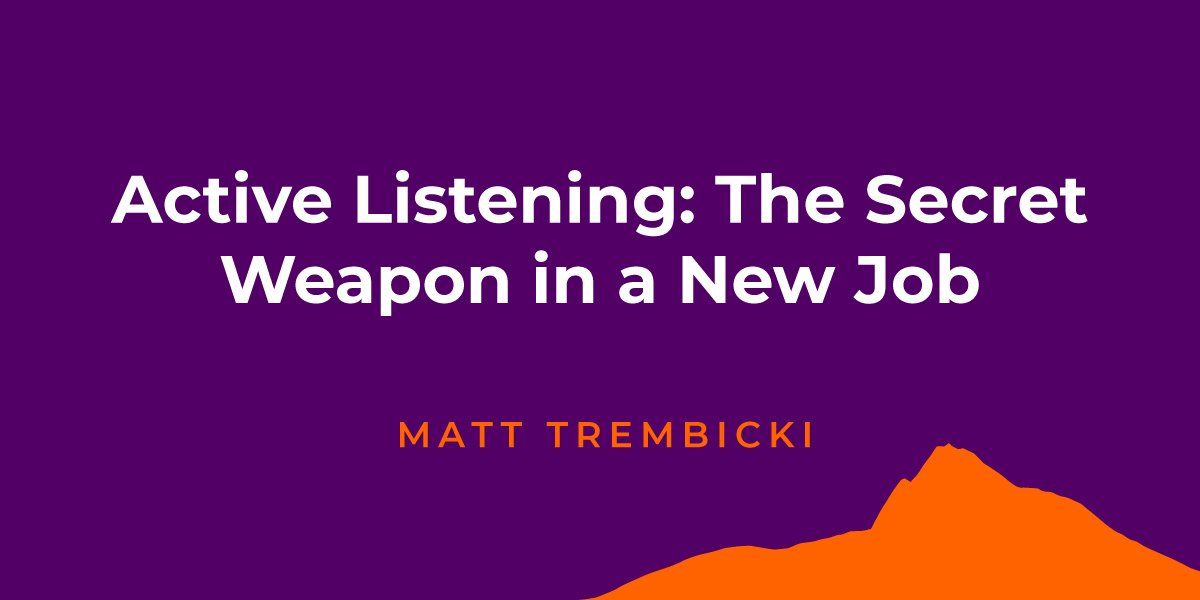Active Listening: The Secret Weapon in a New Job
Active listening is the most important part of being a good consultant. Without it, it is impossible to understand your client’s needs, and to ask the correct questions. It’s an active—not passive—role we each have to play, especially if you are in a new role, or working with someone new.
A lot of people in corporate environments don’t understand how to best utilize and practice active listening. It means focusing on a speaker entirely (turning off your email and Slack notifications), comprehending and carefully considering their words, and then responding effectively.
Active listening is an excellent way to begin the learning process with a new business contact. You’ll be amazed at how when you practice absorbing information and focus, your relationships change. It allows you to thrive with colleagues, because they can see you care about what they’re saying.
A Harvard Business Review article discusses the factors we have to beat to achieve active listening. Emotional filters, thinking ahead of the talker, thinking about evidence to support your own point, summarizing what has been said, and listening for ideas all have to be contended with, and your conversation partner knows this — because they’re doing it too.
If you can master active listening, the art of soaking up wisdom, knowledge, and experience from those that have come before you, you will thrive. If you can manage this while mastering your mindset in new situations, you will be even better off.
Putting yourself into difficult situations—where you’re forced to think about things in different ways and are challenged to solve new problems—is not only good and healthy for people, but it also ties nicely into the work we do as consultants. After all, it’s all about looking at things through a different lens, and helping our clients to do this as well, then navigating the path that lies ahead in the best and most efficient way possible.
Accomplishing this successfully, of course, involves active listening and asking the right questions. Much of what I’ve learned about active listening has come from talking to people, and understanding a problem that somebody has. Or if somebody is looking for a particular position or role or type of opportunity, really being able to hear what they are needing, and honing in on that to pinpoint precisely what steps need to be taken to actually help find a solution and best fit.
Bottom Line: I think a lot of times people are there, and they look like—maybe even feel that they are—listening, but they’re not really listening. Instead, they’re just waiting to say the next thing that they want to say—already formulating it in their mind. It sounds simple, but if you can master the art of active listening, it will naturally lend to knowing the next “right” questions to ask, and ultimately, arriving at successful solutions that satisfy your client’s needs and meet your objectives.




